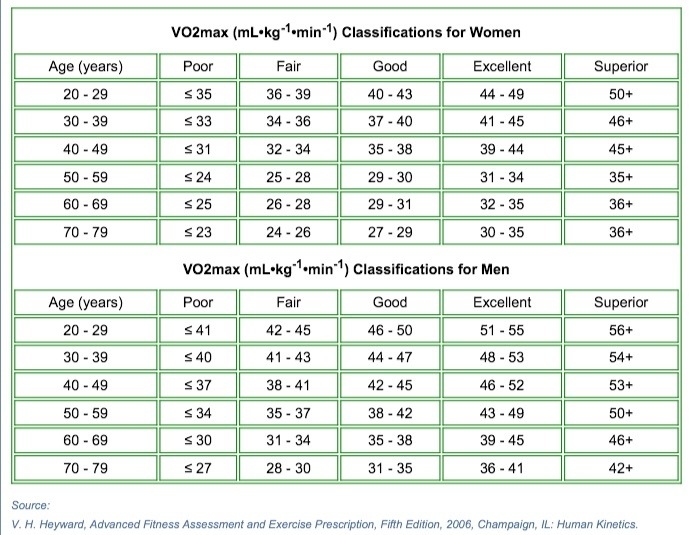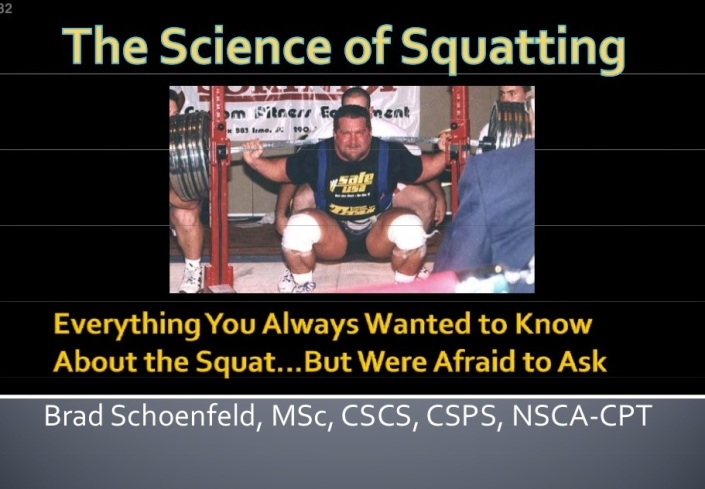Exercise technology and apps
 Last week, on my semi-regular radio spot on 774 Local Radio, the host Raf Epstein and I chatted about apps and devices that can help you with your fitness goals. Read the rest of this entry »
Last week, on my semi-regular radio spot on 774 Local Radio, the host Raf Epstein and I chatted about apps and devices that can help you with your fitness goals. Read the rest of this entry »
Jawbone UP – valuable or expensive gimmick?
 The next big thing in tech is wearable technology. And the fitness industry is a prime candidate for accessories that can be used to augment your journey. One such tool is the Jawbone UP. At a recommended price of $150AUD, this bracelet collects data about your movement while awake and asleep. But the real magic isn’t the bracelet but the free app that supports it. Read the rest of this entry »
The next big thing in tech is wearable technology. And the fitness industry is a prime candidate for accessories that can be used to augment your journey. One such tool is the Jawbone UP. At a recommended price of $150AUD, this bracelet collects data about your movement while awake and asleep. But the real magic isn’t the bracelet but the free app that supports it. Read the rest of this entry »
Workout Tech: Bose Soundlink Mini
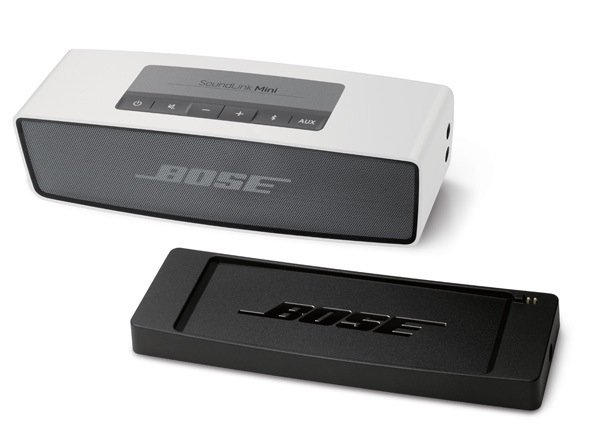
If you train at home, having some inspirational music can be a great help. The Bose Soundlink Mini is bluetooth speaker dock that is small in size but delivers massive sound at exceptional quality.
Can lifting help your running?
 Conventional wisdom says that in order to get good at something you need to continually repeat that activity. For example, the science fiction writer Jerry Pournelle says that you need to write about 2,000,000 words before you become a consistently good writer. With running, it stands to reason that running more would make you a better runner.
Conventional wisdom says that in order to get good at something you need to continually repeat that activity. For example, the science fiction writer Jerry Pournelle says that you need to write about 2,000,000 words before you become a consistently good writer. With running, it stands to reason that running more would make you a better runner.
That’s what I thought and it’s what I did when I last considered myself a runner, about a decade ago. The trouble was that even though I added distance, I didn’t really get much faster or stronger. Eventually, I plateaued.
This time I’ve been training in quite a different way. My focus has been more balanced with a mix of running and weight lifting. My weight lifting program is very basic. It’s based on four compound exercises: the squat, the deadlift, bench-press and bent-over row. As a result, my overall strength has improved substantially.
A couple of weeks ago, I decided to run up a local hill on one of my runs. Until then, I’d worked my route so that I could avoid that hill. The first time I tried to take that hill I couldn’t do it. The next time it was hard. But when I added squats to my regular routine, that hill became little more than a minor annoyance. The extra leg strength has made a significant difference.
It also means that my general fitness is far better. Rather than only working part of my body, I’m balancing the work so that all the major muscles in my body are worked.
What’s a reasonable rate of weight loss?
Most people, when they start an exercise and diet program, focus on one number – their weight. Standing on the scale each day, or even more often, becomes an obsession. Every kilogram or pound that comes off is a victory and any increase can be very discouraging.
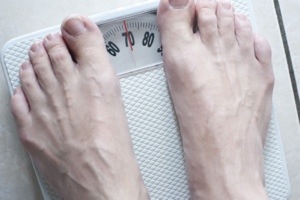 One thing to remember is that your weight can fluctuate each day by a kilogram or so (I’m staying metric – 1kg = 2.2lb) because of hydration or recent meals that haven’t made their way through your digestive tract. Also, you’ll find that your weight changes through the course of the day and even if you move your scales. I can gain and lose weight simply by moving my scales from one part of the bathroom floor to another.
One thing to remember is that your weight can fluctuate each day by a kilogram or so (I’m staying metric – 1kg = 2.2lb) because of hydration or recent meals that haven’t made their way through your digestive tract. Also, you’ll find that your weight changes through the course of the day and even if you move your scales. I can gain and lose weight simply by moving my scales from one part of the bathroom floor to another.
There’s no hard and fast rule as to the best rate of weight loss. In my case, the first few kilograms came off quite quickly but things then slowed down to 0.5kg or less per week. There have been weeks when the weight loss stopped but it then resumed.
It’s not just weight you should track
As well as tracking your weight I’d suggest doing a couple of other things.
1. Take regular measurements: Using a a tape measure, record your chest, waist, hips, thigh, calf and arm measurements. Once you’re exercising you’ll find that your body will change faster than the scales. Although you’ll become leaner, and consequently your measurements will shrink, your weight might not follow suit.
2. Don’t worry about daily fluctuations: Your weight will fluctuate each day – that’s a fact of life. Pay more attention to the trend rather than any one reading.
There are several other measures such as BMI that people use as a measure of their body fat. However, that measure isn’t of much use for people that exercise. As your muscle mass increases your weight will increase as muscle is heavier than fat. As a result, it’s possible to be quite lean but have a high BMI.
My doctor focuses on just one measure – waist size. There are strong correlations between waist measurement and health issues such as heart disease.
Whatever you choose, remember that your weight is just one dimension of your health. It’s one indicator amongst many of the progress of your exercise program.
Weight training for beginners
If you decide to add some weight training to your workout regime, it can be quite daunting. Many people start out by visiting a gym and end up discouraged as there’s so much equipment and so many options that they don’t know where to start. Instructors, although well trained and well meaning, design programs that include many exercises so that every major muscle group is trained.
If you are looking to constrain costs, you might decide to buy your own weight training gear and work out at home. But you still need to decide what to do. And then you’re back in the same place where there are literally hundreds of exercises to choose from.
What do you do?
I’m going to make a suggestion. Weight training is really quite simple. Although, there are hundreds of exercises to choose from, you can create an effective program that will work all your major muscles with just a few exercises. The secret is to focus on compound exercises. These work several major muscle groups at the same time.
The exercises
My suggestion is to start with a small number of exercises. There are four I’d focus on.
Deadlifts
Squats
Bench press
Rows or pull-ups
I’d also add some crunches and planks to strengthen your abdominals and core muscles.
There are plenty of guides on YouTube on how to perform these exercises correctly. When you start out, keep the weights light and focus on form and technique. You might use lighter weights initially, but you’ll protect your body from injury.
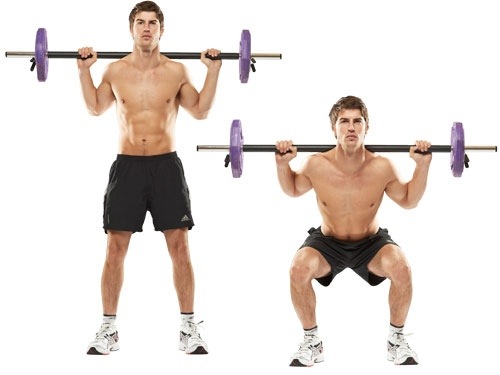
Equipment
The great thing is that you can do all of these with just a set of dumbbells when you start outalthough a barbell will be handy as well.
There’s no need to buy a bench straight away- an exercise ball is far cheaper and will suffice.
If you’re not ready for weights, there are good bodyweight variations of these exercise (I’m a fan of one-legged squats) that you can use. The great thing is that you can use those variations anywhere – even when you’re travelling.
What’s your motivation?
Everyone who exercises does it for some good reason. Usually, you hear things like “to lose weight”, “get fitter for ” or “look better”. My suspicion is that the real reasons are often a little deeper.
My story
Until about eight years ago I exercised regularly. I ran, getting up to a half-marathon, played squash and lifted weights. My weight was under control and I was pretty fit. But I slacked off – that started with injury but was fueled by laziness – and in January this year my weight peaked.
I’m now 45 years old. When my father was 45, he was overweight and had been diagnosed with Type 2 diabetes. I could see that I was on the same path as I inherited his body shape. So, it would seem that I have a constant battle with Mother Nature to fight.
The real motivation
My father died a few years ago. The last decade of his life was spent in and out of hospitals. There was a heart attack followed by strokes, open heart surgery and numerous other complications. While he was still in complete possession of his cognitive abilities the physical challenges were significant.
Many of these issues were avoidable. The diabetes was lifestyle driven and it was this avoidable disease that drove the complications that ultimately took my father’s life.
I have three children. I like being able to swim with them, hassle them on a basketball court, play tennis and chase them around the park. Unless I stay healthy I can’t do that with them and, hopefully when the time comes, their children.
For me, the real motivation isn’t about being thinner or running faster or further. Those things are just markers along a far more important road of lifelong health and fitness so that I can enjoy life.
What really motivates you?
Dealing With Injury
Today marks exactly three months and one day since I started exercising regularly. According to Nike+ I’ve covered 189km in 40 runs over about 22.5 hours. Throw in a few weight training sessions and its been a productive time. I’ve dropped two sizes, lost over 14 kg (30 lbs) and feel far healthier, stronger and fitter. And today marks my first injury.

It seems that I’ve strained my left calf while running this morning. I wasn’t pushing hard – I always go easier when increasing my distance – and was coming off a rest day. The surface was stable. As far as I can tell, there was no reason other than I’m not a kid anymore.
What did I do first?
Once I got home, I made up an ice pack, put my leg up and started to try to reduce the inflammation and pain. As I’m on holidays, and was planning to head out, I spent some time standing in the water at the beach. A couple of sessions in the water and some very gentle stretching eased some of the pain and stiffness.
At this stage, while I’m still sore and limited in movement, I’m not too worried as this is my body’s way of protecting me from further damage. Soft tissue injuries go through several stages of recovery before being finally resolved.
If this is a minor strain I suspect I’ll be back to some light running in a week or so. I suspect that the worst case is a three week break from running.
What’s next?
I’m not sure how severe the strain is yet but I’m guessing I’ll be off running for at least a week. One piece of advice about recovering from running injuries suggests engaging in some cross-training and easing back into running with some run/walk sessions. I’m thinking of repeating week one of Couch to 5K.
I’ll be back in weight room in a day or so but will focus on upper body exercises and lay off the squats and deadlifts. I might think about the exercise bike if the pain subsides but not before.
If the pain is still there in a week, I’ll see a doctor and look at other recovery options.
I’m not diving straight into over the counter anti-inflammatory medications like ibuprofen. While they may be effective, there are plenty of contra-indications (list of potential ibuprofen side effects) and I’ve always preferred to let my body heal itself, resorting to medications only after giving my body a chance.
What’s VO2 Max and Why You Should Care
If you’ve been running, or doing any other aerobic training, then you’ve probably heard about VO2 Max.
What is VO2 Max?
VO2 Max is a measure of your body’s ability to use oxygen. The higher your VO2 Max, the greater your body’s ability to take and use oxygen while you’re training.
V = volume
O2 = oxygen
Max = maximum
VO2 Max is measured in ml of oxygen consumed per kg of body weight per minute of activity.
How is VO2 Max measured?
The most accurate way to measure VO2 Max is to use a device that measures oxygen intake and carbon dioxide output during increasingly difficult exercise. Think of he sort of set up you see in movies when athletes are running on a treadmill with a face mask and lots of computers.
Alternately, many gyms simply measure heart rate and use that as an indication of oxygen use.
If you’re after an approximation of your VO2 Max then you can use one of the simple VO2 Max tests on ShapeSense.
What’s influences your VO2 Max score?
There are several factors that can influence your VO2 Max score. They are
- Age – as you get older, your ability to use oxygen efficiently reduces.
- Weight/body composition – your VO2 Max relies on organic tissue that can use oxygen. If you’re carrying a lot of fat, your ability to use oxygen is decreased.
- Fitness – fitter people can use oxygen more efficiently than unfit people
- Gender – men tend to have higher VO2 Max scores.
What’s a good VO2 Max score?
According to the VO2 Max article on Wikipedia
The average untrained healthy male will have a VO2 max of approximately 35-40 ml/kg/min. The average untrained healthy female will score a VO2 max of approximately 27-31 ml/kg/min. Elite male runners can consume up to 85 ml/kg/min, and female elite runners can consume about 77 ml/kg/min. Five time Tour de France winner Miguel Indurain is reported to have had a VO2 max of 88.0 at his peak, while cross-country skier Bjørn Dæhlie measured at 96 ml/kg/min.
So where does that put the rest of us? This table from ShapeSense lists the normal VO2 Max ranges for men and women of different ages and activity levels.
What can you do to increase your VO2 Max?
You can increase your VO2 Max through training. The science behind this is covered, in this article at Active describing how to improve your VO2 Max.
In short, the key is high intensity interval training where you push your body. This causes your body to react in several ways that improve your body’s use of oxygen.
All About Squatting
Not many exercises can activate 200 muscles at one time and help you increase strength, burn fat and build muscle at the same time. The squat is the one exercise that can.
If you’re interested in the science of the squat then I strongly suggest you take a look at The Science of Squatting. This is a presentation given at a recent conference.
As well as going into significant detail about the muscles, joints and forces that are at play when performing the “king of exercises”, the presentation also delves into technique and the benefits and contraindications of performing the squat in particularly ways.
If you’re into training heavy, then this is well worth a look.
- ← Previous
- 1
- 2
- 3
- Next →

